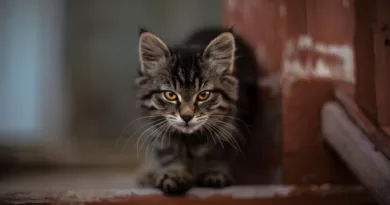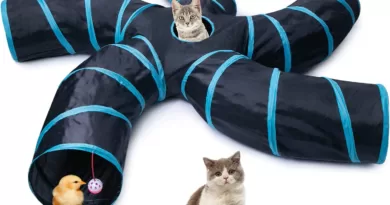Purr-fectly Priced: Breaking Down the Expenses of Caring for a Feline Friend
Expenses of Caring for a Feline Friend
Owning a cat can bring immense joy and companionship to your life. They are known for their independent nature and their ability to provide comfort and love. However, it’s important to be prepared for the financial responsibilities that come with owning a cat. From the initial costs of adoption or purchase to the ongoing expenses of food, veterinary care, and grooming, there are many factors to consider when budgeting for your feline friend. In this blog post, we will discuss the various costs associated with owning a cat and provide tips on how to budget and save money while still providing the best care for your furry companion.
The Initial Costs: Preparing for a New Feline Companion
When bringing a new cat into your home, there are several initial costs to consider. Adoption fees or purchase prices can vary depending on where you get your cat from. It’s important to research different shelters or breeders to find one that fits your budget. Additionally, spaying or neutering your cat is an essential part of responsible pet ownership and can help prevent certain health issues. This procedure can range in cost depending on your location and the gender of your cat.
Microchipping is another important expense to consider. Microchips are tiny devices implanted under the skin that contain identification information. This can be crucial in helping reunite you with your cat if they ever get lost. The cost of microchipping can vary, but it is a one-time expense that provides peace of mind.
Lastly, you will need to invest in a cat carrier and other necessary supplies such as a litter box, food and water bowls, toys, scratching posts, and bedding. These items can add up quickly, so it’s important to shop around for the best deals and consider purchasing second-hand items when possible.

See Also: When To Euthanize A Cat With IBD?
Budgeting for Food and Treats: Providing a Nutritious Diet
Feeding your cat a nutritious diet is essential for their overall health and well-being. However, cat food can be expensive, especially if you opt for high-quality brands. It’s important to choose a cat food that meets their nutritional needs and is free from fillers and artificial ingredients. While these premium brands may have a higher upfront cost, they can help prevent health issues down the line, potentially saving you money on veterinary bills.
One way to save money on cat food is to buy in bulk or use subscription services. Many pet stores offer discounts when you purchase larger quantities of cat food, and some online retailers offer subscription services that deliver food directly to your door on a regular basis. This can help you save money in the long run and ensure that you never run out of food.
Additionally, making homemade treats for your cat can be a fun and cost-effective way to provide them with special treats. There are many recipes available online that use simple ingredients such as canned tuna or chicken baby food. Just be sure to research which foods are safe for cats before making homemade treats.
Veterinary Care: Understanding the Costs of Routine Check-ups and Vaccinations
Regular veterinary care is essential for keeping your cat healthy and preventing potential health issues. Annual check-ups and vaccinations are necessary to ensure that your cat is up to date on their immunizations and to catch any potential health problems early on. The cost of these routine visits can vary depending on your location and the specific services provided by your veterinarian.
In addition to routine check-ups, preventive care such as flea and tick treatments is also important for your cat’s health. Fleas and ticks can cause a variety of health issues, including skin irritations, infections, and even diseases. The cost of these treatments can vary depending on the brand and type of product you choose.
Regular dental care is another important aspect of veterinary care for cats. Dental disease is common in cats and can lead to serious health issues if left untreated. Regular dental cleanings and check-ups can help prevent dental disease and save you money on potential dental procedures in the future.

Litter Box Essentials: Managing the Cost of Cat Litter and Supplies
Providing a clean and comfortable litter box is essential for your cat’s health and well-being. However, the cost of cat litter and supplies can add up over time. There are several ways to manage these costs and save money.
First, consider comparing different types of litter to find one that fits your budget. There are many options available, including clay litter, clumping litter, and natural alternatives such as pine or corn-based litter. Each type of litter has its own pros and cons, so it’s important to find one that works best for you and your cat.
Using litter box liners or reusable litter trays can also help save money on litter. Liners can make cleaning the litter box easier and prevent the need for excessive litter changes. Reusable trays can be washed and reused, reducing the amount of litter you need to purchase.
If you’re feeling crafty, there are also many DIY litter box solutions available online. From repurposing storage containers to building your own litter box furniture, these creative solutions can help save money while still providing a functional and aesthetically pleasing litter box.
Toys and Enrichment: Keeping Your Cat Happy on a Budget
Keeping your cat entertained and mentally stimulated is important for their overall well-being. However, toys can be expensive, especially if your cat tends to lose interest quickly. There are several ways to keep your cat happy on a budget.
DIY toys and games can be a fun and cost-effective way to provide enrichment for your cat. Simple items such as cardboard boxes, paper bags, and string can provide hours of entertainment for your feline friend. There are also many DIY tutorials available online for making your own cat toys using common household items.
Rotating toys can also help keep them interesting for your cat. Instead of leaving all of their toys out at once, try rotating them every few weeks. This can help prevent boredom and keep your cat engaged with their toys.
Creating a stimulating environment is another important aspect of keeping your cat happy and entertained. Provide plenty of vertical spaces for your cat to climb and explore, such as cat trees or shelves. Consider setting up bird feeders outside of windows to provide entertainment for your cat. You can also create hiding spots and tunnels using cardboard boxes or blankets.
Grooming and Hygiene: Balancing the Cost of Cat Shampoos and Brushes
Regular grooming is important for keeping your cat’s coat healthy and preventing matting. However, the cost of grooming products such as shampoos and brushes can add up over time. There are several ways to balance the cost of grooming while still providing proper care for your cat.
Regular brushing is essential for preventing matting and keeping your cat’s coat clean and healthy. Invest in a high-quality brush that is suitable for your cat’s coat type. While these brushes may have a higher upfront cost, they are often more effective and durable than cheaper alternatives.
When it comes to grooming products such as shampoos, there are many affordable options available. Look for products that are specifically formulated for cats and avoid using human shampoos, as they can be too harsh for their sensitive skin. Additionally, consider making your own grooming products using natural ingredients such as oatmeal or coconut oil.

Flea and Tick Prevention: Investing in Your Cat’s Health and Comfort
Flea and tick prevention is an important aspect of cat care, as these parasites can cause a variety of health issues. There are several products available on the market, each with its own cost and effectiveness.
When comparing different products, it’s important to consider both the upfront cost and the long-term effectiveness. Some products may have a higher upfront cost but provide longer-lasting protection, while others may be more affordable but require more frequent applications.
Natural alternatives to chemical treatments are also available and can be a cost-effective option for some cat owners. Essential oils such as lavender or cedarwood can help repel fleas and ticks, but it’s important to research which oils are safe for cats and how to properly dilute and apply them.
Insurance and Emergency Funds: Planning for Unexpected Veterinary Expenses
No matter how well you budget and plan, there may still be unexpected veterinary expenses that arise. It’s important to be prepared for these situations by having a financial plan in place.
Pet insurance is one option to consider. Pet insurance can help cover the cost of unexpected veterinary expenses, including accidents, illnesses, and surgeries. There are many different pet insurance providers available, each with its own coverage options and costs. It’s important to research different providers and policies to find one that fits your budget and provides the coverage you need.
Setting up an emergency fund specifically for your cat’s veterinary expenses is another important step in planning for unexpected costs. By setting aside a small amount of money each month, you can build up a fund that can be used in case of emergencies. This can provide peace of mind knowing that you have a financial safety net in place.
Researching low-cost veterinary clinics or programs in your area is also important. Many communities offer low-cost spay/neuter clinics or vaccination clinics that can help reduce the cost of routine veterinary care. Additionally, some organizations offer financial assistance programs for pet owners who are struggling to afford veterinary care.

Boarding and Pet Sitting: Exploring Options for Care During Vacations
When planning a vacation or trip, it’s important to consider the cost of boarding or pet sitting services. Boarding facilities can vary in cost depending on the location and amenities provided. It’s important to research different facilities and read reviews to ensure that your cat will be well taken care of.
Hiring a pet sitter is another option to consider. Pet sitters can come to your home and provide care for your cat while you’re away. This can be a more affordable option than boarding, especially if you have multiple cats or if your cat is not comfortable in a boarding environment. It’s important to interview potential pet sitters and check references to ensure that they are reliable and experienced.
Asking friends or family for help is another option to consider. If you have trusted friends or family members who are willing to care for your cat while you’re away, this can be a cost-effective solution. Just be sure to provide clear instructions and any necessary supplies to ensure that your cat is well taken care of.
DIY vs. Professional: Weighing the Costs of Cat Care Services
When it comes to certain cat care services, such as grooming, training, or behavior consultations, it’s important to weigh the costs of doing it yourself versus hiring a professional.
Grooming services can be expensive, especially if you have a long-haired cat that requires regular grooming. However, grooming your cat at home can be challenging, especially if they are not used to being handled or groomed. If you’re comfortable and confident in your grooming skills, doing it yourself can save you money. However, if you’re unsure or if your cat requires specialized grooming techniques, it may be worth investing in professional grooming services.
Training classes can also be costly, but they can provide valuable skills and knowledge for both you and your cat. If you’re experienced in training cats or if your cat has basic obedience skills, you may be able to train them at home using online resources or books. However, if you’re new to training or if your cat has specific behavior issues, it may be worth investing in professional training classes or consultations.
Cat behaviorists are professionals who specialize in understanding and addressing cat behavior issues. If you’re experiencing behavior problems with your cat, such as aggression or litter box issues, it may be worth consulting with a behaviorist. While their services can be expensive, they can provide valuable insights and strategies for addressing these issues.
Expenses of Caring for a Feline Friend: Conclusion
Owning a cat can be a rewarding experience, but it’s important to be prepared for the financial responsibilities that come with it. By budgeting and making smart choices, you can provide the best care for your cat while still saving money. From the initial costs of adoption or purchase to the ongoing expenses of food, veterinary care, and grooming, there are many factors to consider when budgeting for your feline friend. By considering different options, comparing prices, and exploring DIY solutions, you can provide a happy and healthy life for your cat without breaking the bank.
Enjoyed This Article? You May Also Like:




